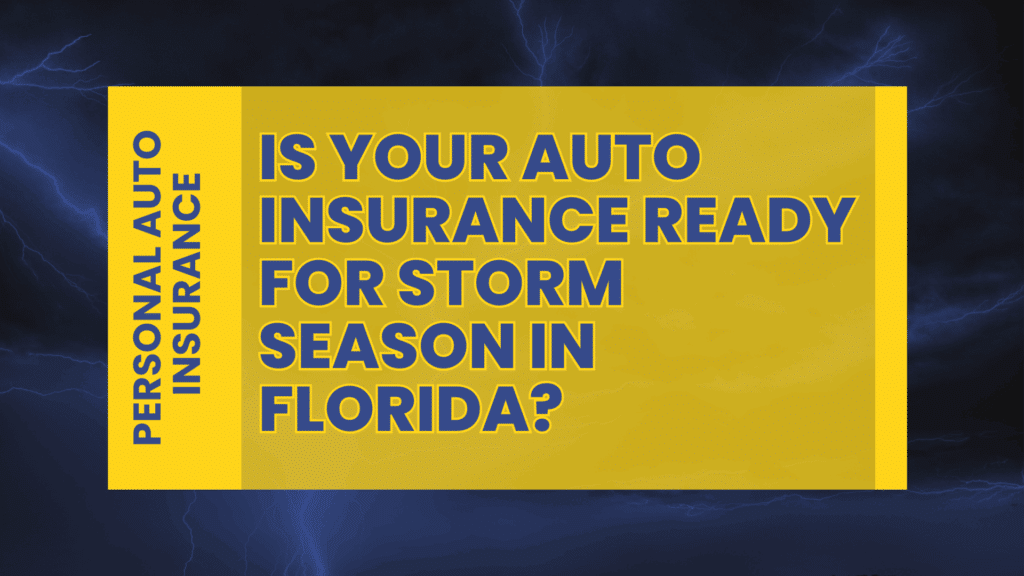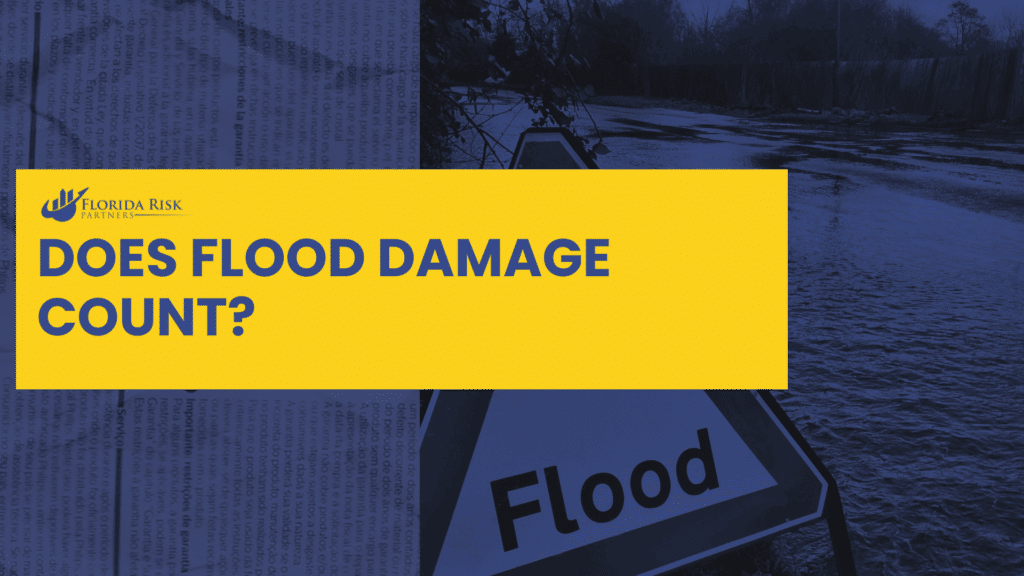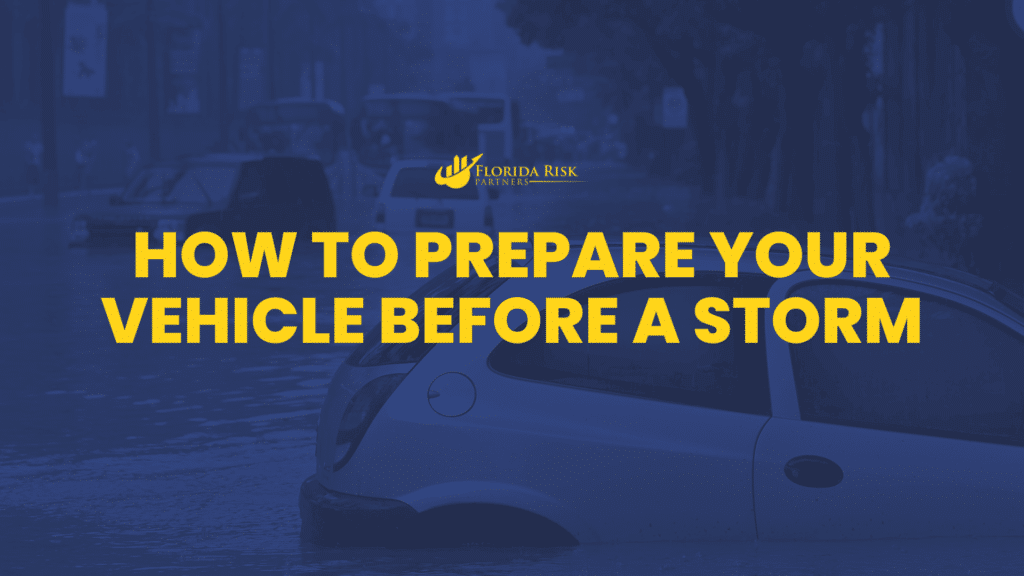-
Main Office: 1434 E. Bloomingdale Ave Valrico, FL 33596-6110
-
Phone: (888) 601-6660
-
Email: info@floridariskpartners.com

How to Protect Your Vehicle from Hurricanes, Floods, and Weather-Related Damage
Florida is no stranger asto hurricanes, flooding, and severe weather. And while most residents focus on preparing their homes for storm season, one area is often overlooked—your car. From water damage and flying debris to fallen trees and hailstorms, your vehicle is at significant risk during Florida’s active storm months.
The good news? You can protect it—if you have the right coverage in place before the storm hits.
In this post, we’ll explain how comprehensive auto insurance protects your vehicle from storm-related damage, what to do before and after a hurricane, and why acting early could save you thousands in repair or replacement costs.
What Coverage Protects Against Storm Damage?
To understand whether your car is protected, you need to look at your comprehensive coverage.
Comprehensive insurance pays to repair or replace your vehicle if it’s damaged by events other than a collision—including:
- Flooding or storm surge
- Fallen trees or branches
- Flying debris or projectiles
- Hail, wind, or lightning
- Theft or vandalism during evacuation
In Florida, comprehensive coverage is optional, but highly recommended—especially during hurricane season. Without it, you’ll be paying out-of-pocket for any storm-related damage to your vehicle.
Not sure if you have it? Download our coverage planner worksheet to review your current policy and coverage limits.
Does Flood Damage Count?

Yes—flood damage is specifically covered under comprehensive coverage, not collision or liability insurance. This is a critical distinction because flood-related car damage is extremely common during hurricanes and tropical storms, especially in low-lying or coastal areas.
Important note: Once a storm watch or warning is issued, insurance companies may place binding restrictions, meaning you won’t be able to add or change your coverage until the storm has passed. That’s why it’s crucial to review your policy well before storm season peaks.
Want to learn more about Florida’s car insurance coverage types? Check out our guide to full coverage vs. minimum coverage.
What Happens If You Don’t Have Comprehensive?
Without comprehensive coverage, your auto insurance won’t cover:
- Water damage from storm surge or flash floods
- Cracked windshields from hail
- Dents or destruction from falling tree limbs
- Total losses from submerged or totaled vehicles
In those cases, you’re on your own. And considering the average cost of replacing a vehicle is over $30,000, that’s a massive financial burden to take on—especially when repairs may not be possible.
How to Prepare Your Vehicle Before a Storm
Having the right coverage is only part of the equation. Here are steps you can take to minimize damage before a hurricane or tropical storm:
1. Review Your Auto Policy
Make sure you have comprehensive coverage and that your deductible is something you can afford if a claim arises.
2. Move Your Vehicle to Higher Ground
If possible, park your car in a garage, carport, or an elevated parking structure. Avoid low-lying areas that are prone to flooding.
3. Take Photos of Your Vehicle
Before the storm, take clear photos of your car from all angles. These can help validate your claim if your vehicle is damaged.

4. Avoid Driving During Severe Weather
Never attempt to drive through flooded roads. Just a few inches of water can cause catastrophic engine damage—or worse, sweep your vehicle away.
What to Do After the Storm
If your vehicle is damaged, follow these steps:
- Take photos of the damage immediately
- File a claim with your insurance company as soon as it’s safe to do so
- Avoid further damage—for example, don’t try to start a flooded car
- Request a tow if your vehicle is undriveable
Having comprehensive coverage will allow your insurer to step in and cover the cost of repairs or a full replacement, depending on the extent of the damage.
Need help filing a claim or understanding your options? Schedule a free post-storm insurance review with our team—we’ll walk you through the next steps.
Don’t Wait Until the Storm Is on the Radar
The time to check your coverage isn’t when the weather is already turning—it’s before hurricane season is in full swing. Once a named storm is tracking toward Florida, it’s too late to make changes to your policy.
That’s why now is the perfect time to:
- Add or confirm comprehensive coverage
- Review your deductibles and limits
- Update your insurer with any changes to your vehicle, address, or usage
- Prepare a storm plan for your vehicle and important documents
Coming Next Week: Common Car Insurance Myths Debunked
Think red cars cost more to insure? Or that minimum coverage is “good enough”? Next week, we’ll bust the most common Florida car insurance myths and help you separate fact from fiction—so you can make smarter choices about your coverage.
Call Us Or
Schedule an Appointment
Select an agent below to view our online calendars and select a day and time that works best for you or call us directly at 888-601-6660. When you use our online calendars, you will receive an email with more information.



